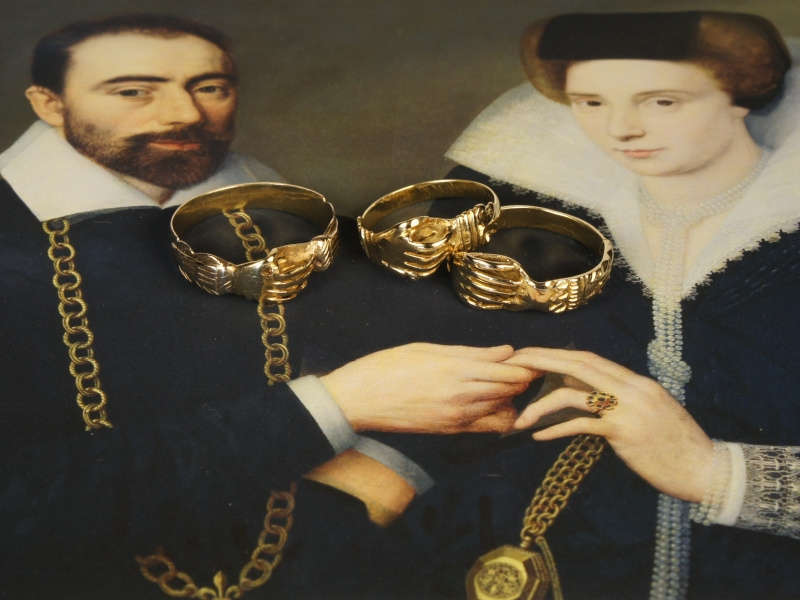
The presented aesthetic Fede ring poses a few puzzles in terms of its chronological classification. Cuffs and sleeves are decorated with mannerist ornaments. The first border, a sharp zigzag pattern, may represents a lace border. This is followed by a finely ribbed hand ruffle peeping out from under a plain ring border. Finally, along the sleeves, a three-dimensional leaf decoration with a wedge-shaped pattern runs. It could be an acanthus leaf, which has been used since the 5th century as a stylized, decorative ornament and was considered a symbol of life and immortality in the Mediterranean countries. The engravings are handmade.
The ring rail was probably made from flat rolled gold sheet, while both hands including the fingers were sawn out. What is distinctive and unique about this type of ring design is how the fingers have been soldered together - practically invisibly - with the opposite hand. This means that the handshake forms a cavity and thus allows both hands to be seen. Similar to a game of deception, it is unclear at first glance how hands and fingers can be put together and untangled again. This ingenious, transparent construction can be studied well on a Fede ring from the Alice and Louis Koch Collection in the Swiss National Museum in Zurich, which is dated somewhat earlier.
This ring impresses with its unique three-dimensional design of the mani in fede and its Renaissance-style ornamentation on the ring shoulders, which put the sign of love, deep friendship and attachment in a worthy setting!

